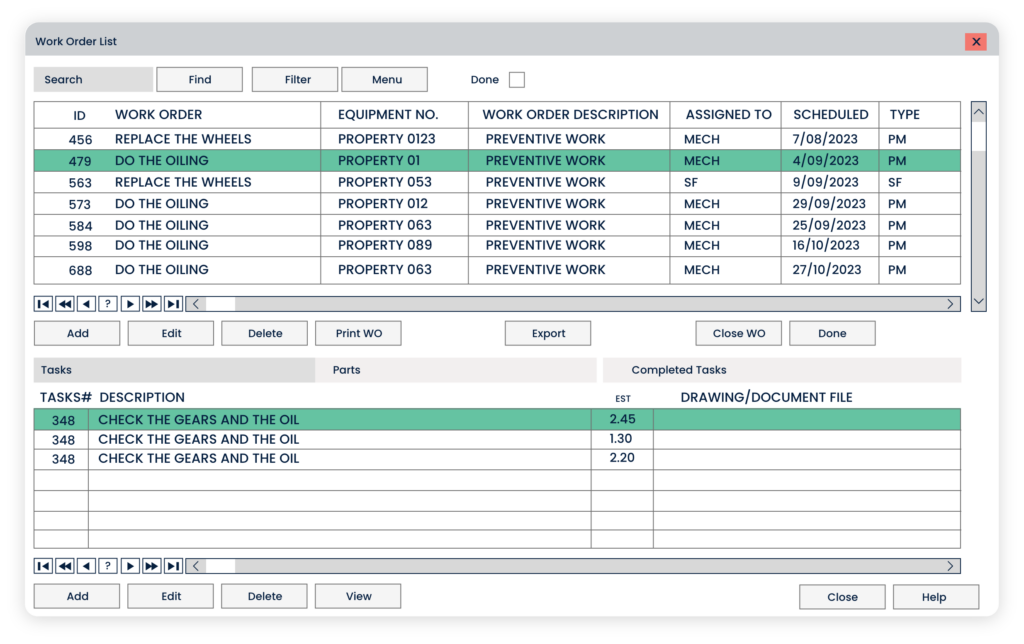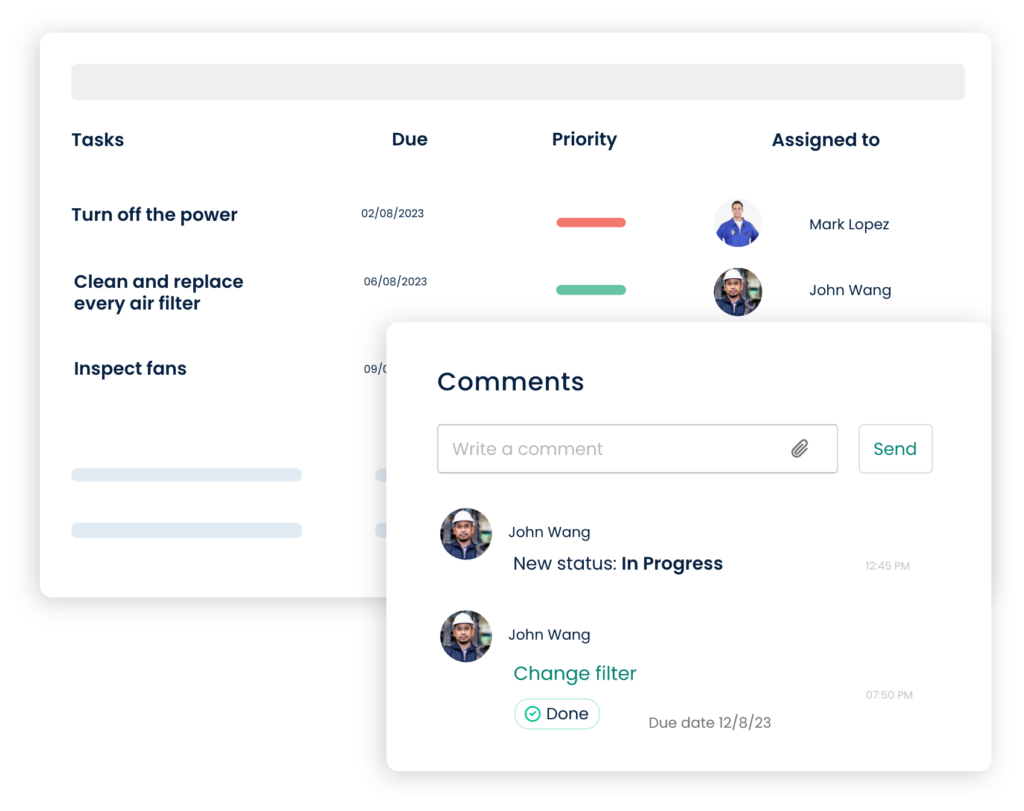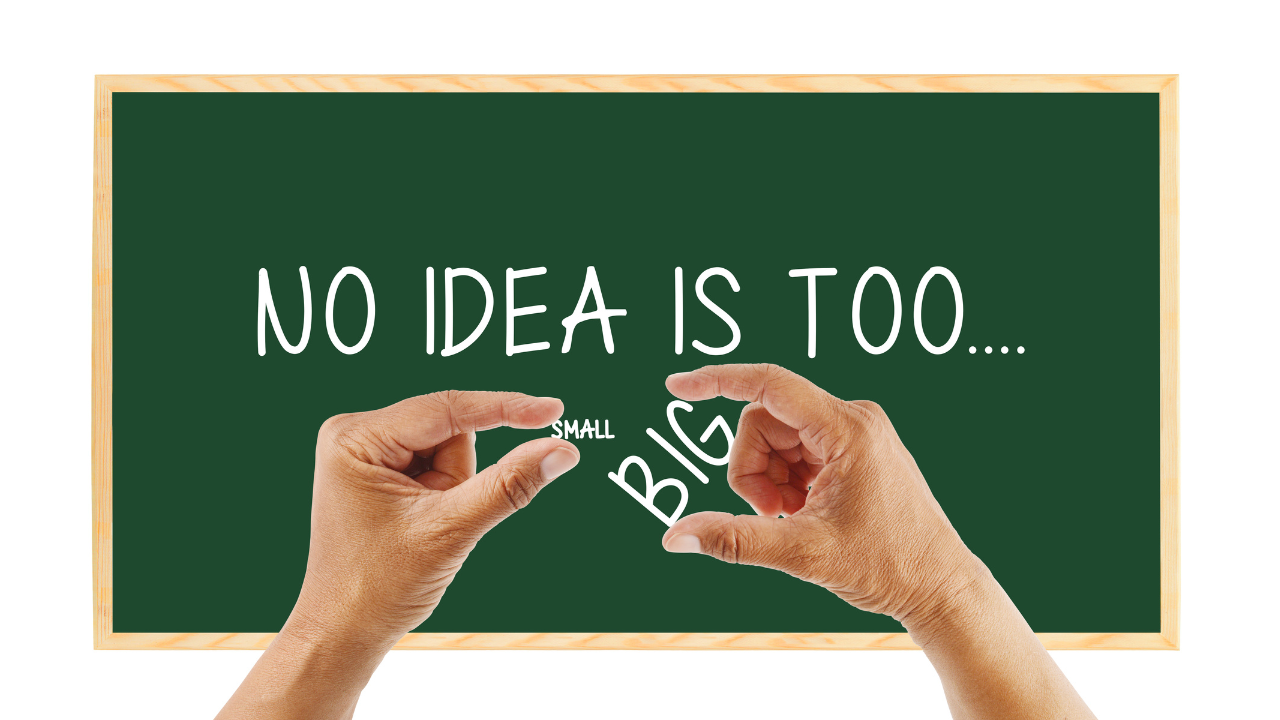8 Tips for Getting Maintenance Technicians to Adopt CMMS Software
Reena Sommer, Ph.D, Content Writer and Trial Consultant
Posted on 9/19/2023
Introduction
If you’ve already started the process of researching Computerized Maintenance Management Systems (CMMS), you’re probably already aware of these systems’ wide range of benefits, costs, and the time and resources needed for implementation. Finding the CMMS that best aligns with your company’s needs takes time. Beyond these initial steps, the next challenge is finding ways to encourage maintenance technicians to embrace what will be a very different approach to managing your organization’s maintenance operations. Driving user adoption of the CMMS is by no means an insurmountable problem, but still remains an issue that cannot be overlooked. Without technicians’ buy-in, the full benefits of the system will not be achieved.
Before getting into the ways that to encourage maintenance technicians to adopt CMMS software, let’s begin with a brief overview of the issues that lead to their reluctance in the first place.
Reasons for Low CMMS Adoption among Maintenance Technicians
Resistance to Change
Old habits die hard even if they’re not the most effective ones. This is because most of us feel comfortable doing what we already know. So why look for trouble by taking on something new? Maintenance technicians are no different. Asking them to give up traditional paper-based or manual processes, or an existing CMMS is a big ask for some of them. After all, the existing approach seems to work and moving to something new is often seen as unnecessary additional work. Their reluctance to transition to a digital CMMS is therefore related to the need to learn new software and processes, as well as a fear that taking on a new way of doing things may disrupt an already established workflow. And of course, a new approach brings uncertainty which makes the best of us anxious.
Technical Skills
While most people are fine with texting, emailing or using social media, there are still others who may be intimidated by the thought of being required to use a robust software system. For this reason, some technicians might be reluctant to use a CMMS software because they lack the technical skills to effectively use it. Learning how to navigate the software, input data, generate reports, and troubleshoot technical issues can leave those who are not tech savvy hesitant to take it on.
Maintenance Culture Shift
Organizational culture refers to a company’s beliefs, values and attitudes, and how these influence the behavior of its employees. The culture within an organization sets the stage for how employees approach their tasks, as well as how they conduct themselves in the workplace. When the workplace culture aligns well with its employees, they are more likely to feel comfortable, supported, and valued. When it comes to implementing a CMMS, there needs to be a shift in the maintenance culture towards one that embraces data-driven decision-making and preventive maintenance. Since traditional maintenance management utilizes a reactive, run-to-fail maintenance approach, making the shift to a proactive management approach such as preventive maintenance using a CMMS is new and often leads to resistance among technicians.
To address these challenges, organizations need to invest in comprehensive training, provide ongoing support, involve technicians in the software selection process, and emphasize the benefits that CMMS can bring to their daily work and the organization. Additionally, a well-planned change management strategy can help mitigate resistance to the adoption of CMMS among technicians. Below are eight tips for how to effectively overcome these challenges and motivate maintenance technicians to adopt CMMS software.
Tips for Getting Buy-in from Maintenance Technicians for CMMS
1. Communicate the Benefits of CMMS Software
As a starting point which should occur well in advance of selecting a CMMS software, it is important to clearly communicate the benefits of using CMMS software to maintenance technicians. It is important to explain how it will streamline their work, improve communication, reduce paperwork, and enhance overall efficiency. The message needs to reinforce that CMMS will make employees’ roles better as well as contribute to meeting department and organizational objectives. The focus should be on how a CMMS will make their jobs easier, less stressful and more rewarding. These benefits will give technicians good reasons to give a CMMS a chance.
2. Involve Technicians in CMMS Selection
As a general rule, the more you involve others in major company changes, the higher the probability the change will be embraced. When it comes to selecting a CMMS, having technicians participate in demos, provide feedback on product fit, and share their preferences, the more likely they’ll feel a sense of ownership and be invested in the system’s success. Finally, seeking technicians’ participation during the CMMS product evaluation stage, provides them with a sense of control that could otherwise leave them feeling as if management is forcing a new initiative on them, and does not value their input.
3. Invest in CMMS Training and Support
When it comes to implementing a CMMS, a thorough onboarding process is a must. Training should focus on teaching technicians how to properly use the system, ensuring they feel comfortable using it. To achieve this, providing comprehensive training on using the CMMS functionality that’s relevant to their role is essential. Because of the vast amount of information to be covered during the onboarding process, a one-day workshop will likely overwhelm most users. Instead, better results and less confusion can be achieved by offering multiple shorter training sessions followed by ongoing support to address any questions or issues that arise.
Many managers treat training like a required item on their to-do list, and try to get it all done in 1-2 days of on-site training. Studies show that shorter training sessions and Microlearning get better results with trainees compared to all-day sessions. In addition, avoid training technicians on features of the software that are not relevant to their role. Overwhelming them with information that they’ll never use will only work against you. Training should focus on managing work orders, PMs, inventory and assets and navigating the application. There’s no need to get into APIs, configuring workflows, creating reports and dashboards, and importing data.The goal is to ensure that technicians feel confident using the software and know where to turn for help when it is needed. Having support readily available to technicians will make the transition to CMMS usage feel less daunting.
4. Simplify User Experience
The CMMS marketplace offers a wide range of options. To minimize technicians’ apprehension when shifting to a digital maintenance management system, choose an intuitive and user-friendly CMMS software. The interface should have a clean look to it with easy to identify menu option headers that make accessing tasks and other maintenance operations straightforward. Complicated, confusing and convoluted software will only add to technicians’ frustration, and hinders adoption. Aim for a simple and straightforward user experience that will encourage quicker adoption with fewer errors and a reduction in resistance. There are a lot of options out there, many that apply the latest best practices with UX and UI design, and many legacy, robust platforms that lag in this area. Avoid the latter.


5. Address Concerns
Pay careful attention to maintenance technicians’ concerns and reservations. Hearing them out is important because they will be your CMMS users. Be sure to take the time to thoroughly address their doubts or objections. By understanding their perspectives, you’ll be able to explain to them how the software can address their concerns and make their day to day more efficient. A good approach to soliciting feedback is taking a survey after introducing the CMMS. Use a combination of multiple choice and open-ended questions. Regroup with the team (not individually) and run through the feedback and address the concerns raised. Investing in the time to address and resolve your employees’ concerns will result in greater system adoption and a CMMS that functions effectively and reliably.
6. Start Small
Depending on the complexity of the maintenance operation a robust CMMS might be needed. The implementation process involves inputting data from many different sources. It should be expected that initially, it will take time for users to use all aspects of the system. Keeping this in mind, it’s advisable that after the CMMS has been implemented, its full use should occur gradually. Begin with a pilot project involving a small group of technicians. This allows them to get accustomed to the software without feeling overwhelmed. Technicians and managers can identify unforeseen configuration issues and address prior to rolling out to the rest of the team. This pilot testing phase helps ensure that the rollout is a success. This is similar to a restaurant’s soft opening where business owners test out their processes and service to a small sample and take note of bottlenecks before opening to the public.
7. Provide Incentives
Often an incentive can be just the thing needed to move the needle for reluctant technicians regarding their initial hesitation using a CMMS. This could include recognition for technicians who consistently use the software, rewards for finding and reporting software-related improvements, or even performance-based bonuses tied to efficient utilization of the system. Many CMMSs allow managers to monitor user activity such as login frequency, number of work orders completed, and work orders assigned. Managers can clearly communicate usage expectations and recognize high performers at team meetings. Whatever incentive you choose to offer, it should be meaningful and directly tied to CMMS use. Using this approach, once reluctant technicians will see the intrinsic benefits of CMMS use. They will continue using it because it makes their jobs easier, as well as more efficient and fulfilling.

Reena Sommer
Reena Sommer has written extensively about CMMS and maintenance management best practices since 2018. Reena has been a contributor for Hippo CMMS, Click Maint among others. She has her Ph.D. in Psychology from the University of Manitoba. Reena hails from Winnipeg, Canada and currently resides in Chicago, Illinois, USA.
Related Articles

Too Small for a CMMS? Think Again

The Role of Information Technology in Plant Reliability

The Future of CMMS





